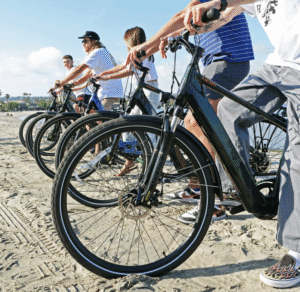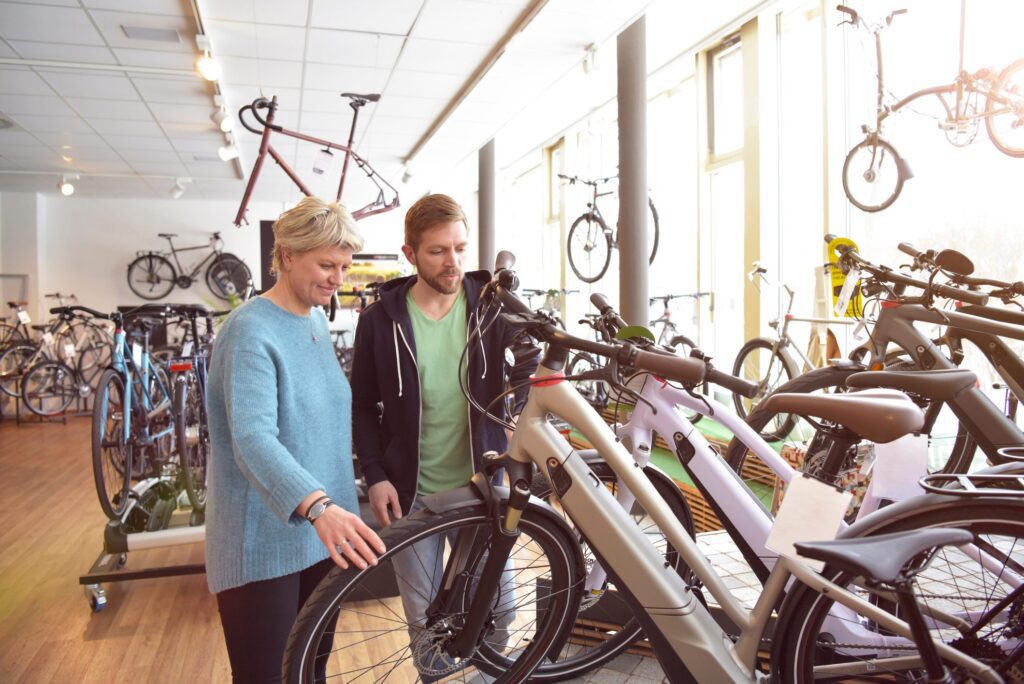Why Finance an E-Bike in 2025?
Financing an e-bike allows you to spread the cost over time, making it easier to afford a high-quality model that meets your needs. Whether you’re a remote worker looking to commute sustainably or an outdoor enthusiast seeking a reliable e-bike for cycling tours, financing options can make your purchase more manageable. With rising transportation costs and a growing emphasis on sustainability, how to finance an e-bike purchase in 2025 is a critical topic for anyone looking to invest in this versatile mode of transport.
Benefits of Financing an E-Bike
-
Affordability: Break down the cost into manageable monthly payments, avoiding a large upfront expense.
-
Access to Quality: Financing allows you to purchase a higher-quality e-bike with better features, such as longer battery life or advanced safety certifications.
-
Environmental Impact: E-bikes reduce carbon emissions compared to cars, aligning with sustainable lifestyle goals.
-
Health and Productivity: Cycling improves physical and mental health, boosting productivity for remote workers.
-
Flexibility: Many financing plans offer customizable terms, from 3 to 60 months, to suit your budget.
The Growing Popularity of E-Bikes
The e-bike market is booming, driven by innovations like lightweight batteries, powerful motors, and UL-certified safety standards. In 2025, e-bikes are increasingly seen as viable alternatives to cars for short commutes, with models like fat-tire bikes and cargo e-bikes catering to diverse needs. Financing options have evolved to match this demand, making it easier to explore how to finance an e-bike purchase in 2025 without compromising on quality or features.

Top Financing Options for E-Bikes in 2025
Several financing avenues are available to make owning an e-bike more affordable. From retailer-backed payment plans to personal loans and government incentives, here are the best ways to finance your e-bike purchase in 2025.
1. Retailer Financing with “Buy Now, Pay Later” Plans
Overview
Many e-bike retailers partner with financing platforms like Affirm, Klarna, or Afterpay to offer “buy now, pay later” (BNPL) plans. These plans allow you to pay for your e-bike in fixed monthly installments, often with low or 0% APR for promotional periods.
How It Works
-
Select a Retailer: Choose an e-bike from a retailer offering BNPL, such as Rad Power Bikes or Aventon.
-
Apply at Checkout: Select the financing option (e.g., Affirm) at checkout, enter basic information, and receive a real-time approval decision.
-
Choose a Plan: Options typically range from 3 to 36 months, with rates from 0% to 36% APR based on credit.
-
Make Payments: Pay through the financing platform’s app or website, with email or text reminders to avoid late fees.
Benefits of Financing an E-Bike
-
Affordability: Break down the cost into manageable monthly payments, avoiding a large upfront expense.
-
Access to Quality: Financing allows you to purchase a higher-quality e-bike with better features, such as longer battery life or advanced safety certifications.
-
Environmental Impact: E-bikes reduce carbon emissions compared to cars, aligning with sustainable lifestyle goals.
-
Health and Productivity: Cycling improves physical and mental health, boosting productivity for remote workers.
-
Flexibility: Many financing plans offer customizable terms, from 3 to 60 months, to suit your budget.
The Growing Popularity of E-Bikes
The e-bike market is booming, driven by innovations like lightweight batteries, powerful motors, and UL-certified safety standards. In 2025, e-bikes are increasingly seen as viable alternatives to cars for short commutes, with models like fat-tire bikes and cargo e-bikes catering to diverse needs. Financing options have evolved to match this demand, making it easier to explore how to finance an e-bike purchase in 2025 without compromising on quality or features.
Top Financing Options for E-Bikes in 2025
1. Retailer Financing with “Buy Now, Pay Later” Plans
Many e-bike retailers partner with financing platforms like Affirm, Klarna, or Afterpay to offer “buy now, pay later” (BNPL) plans. These platforms make purchasing from trusted sellers like Rad Power Bikes easier, often providing low or 0% APR for a set period.
4. Government Incentives and Rebates
In 2025, federal and state governments are offering tax credits and rebates to make e-bikes more affordable. You can find an updated breakdown of these programs in Macfox’s e-bike tax credit guide, which includes eligibility and rebate details across several U.S. states.
Why It’s Great
BNPL plans are ideal for how to finance an e-bike purchase in 2025 because they require minimal credit checks and offer flexible terms. For example, a $1,299 e-bike might cost $39/month over 36 months at 15% APR with Affirm. There are no hidden fees, and early repayment is penalty-free. Retailers like Rad Power Bikes and Aventon integrate these options seamlessly, making the process user-friendly.
Considerations
-
Check APR rates, as they vary based on credit.
-
Ensure the retailer’s financing aligns with your budget, as some plans require a down payment.
-
Verify the e-bike’s quality and warranty to ensure long-term value.
For more details, explore Rad Power Bikes’ financing options.
2. Personal Loans for E-Bike Purchases
Overview
Personal loans from banks, credit unions, or online lenders provide another way to finance an e-bike, especially for higher-end models costing $3,000 or more.
How It Works
-
Choose a Lender: Compare offers from platforms like Acorn Finance, which connects you with multiple lenders.
-
Apply for a Loan: Submit an application with details about your income and credit. Approval is based on creditworthiness.
-
Receive Funds: Once approved, receive the loan amount to purchase your e-bike from any retailer.
-
Repay Over Time: Loan terms typically range from 12 to 60 months, with fixed interest rates (e.g., 4%–12.99%).
Why It’s Great
Personal loans are unsecured, meaning no collateral is required, and you can shop at any retailer. Credit unions like Clean Energy Credit Union offer e-bike-specific loans with terms from 36 to 60 months and rates as low as 4%. These loans are ideal for those exploring how to finance an e-bike purchase in 2025 for pricier models or those needing longer repayment periods.
Considerations
-
Higher interest rates may apply for those with poor credit.
-
Compare total loan costs, not just monthly payments, to avoid overpaying.
-
Check for prepayment penalties, though many lenders, like Clean Energy Credit Union, allow early repayment without fees.
3. Credit Cards with 0% APR Offers
Overview
Using a credit card with a 0% APR introductory offer can be a cost-effective way to finance an e-bike, especially if you can pay it off within the promotional period.
How It Works
-
Apply for a Card: Choose a card with a 0% APR offer for 12–18 months, such as those from major issuers like Chase or Citi.
-
Purchase the E-Bike: Use the card to buy your e-bike, ensuring the purchase fits within your credit limit.
-
Pay Off Balance: Divide the cost into monthly payments to clear the balance before the promotional period ends.
Why It’s Great
Credit cards with 0% APR offers allow you to avoid interest if paid off within the promotional period, making them a smart choice for how to finance an e-bike purchase in 2025. For example, a $2,000 e-bike could be paid off at $167/month over 12 months with no interest. Some cards also offer rewards, adding extra value.
Considerations
-
Requires discipline to pay off the balance before the promotional period ends, as regular APRs can be high (15%–25%).
-
May not be suitable for those with limited credit or a history of carrying balances.
-
Check for annual fees or transaction fees that could offset savings.
4. Government Incentives and Rebates
Overview
In 2025, federal and state governments offer tax credits and rebates to make e-bikes more affordable, reducing the amount you need to finance.
Federal E-Bike Tax Credit
-
Details: The U.S. federal government provides a tax credit of 30% of the e-bike purchase price, up to $1,500, for bikes costing $5,000 or less.
-
Eligibility: Available to all U.S. taxpayers purchasing a new e-bike with a motor of 750 watts or less and UL certification (e.g., UL 2849).
-
How to Claim: Include the credit on your tax return, reducing your tax liability or increasing your refund.
Conclusion
Understanding how to finance an e-bike purchase in 2025 opens up a world of possibilities for remote workers, commuters, and cycling enthusiasts. From retailer-backed BNPL plans like Affirm to personal loans, credit cards, and government incentives, there are numerous ways to make an e-bike affordable. By comparing options, leveraging tax credits, and choosing a high-quality e-bike, you can enjoy the freedom of electric cycling without financial strain. Start exploring these financing avenues today, and ride into 2025 with a sustainable, cost-effective, and exhilarating mode of transportation.



